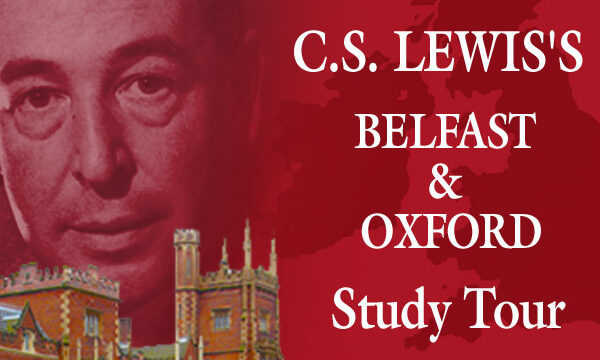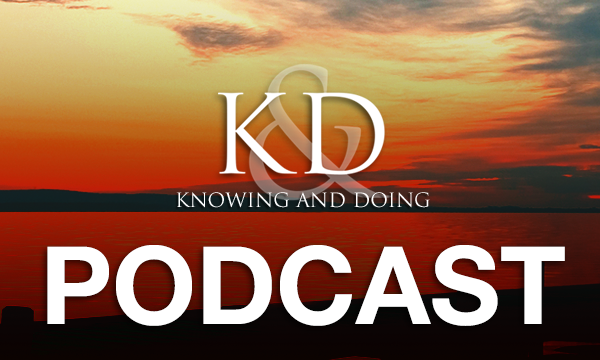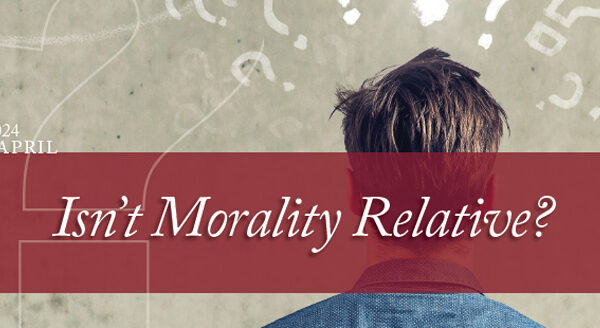Back to series



J.R.R. Tolkien and The Lord of the Rings
Click here to open a Print - Friendly PDF
J.R.R. Tolkien’s great work The Lord of the Rings has, in the opinion of many, a rightful claim to the ranking: “Book of the Century.” In 1996, Waterstone’s bookstores in England took a readers’ poll asking for the “five books you consider to be the greatest of the century.” Of the 26,000 respondents, 5,000 cast first place votes for The Lord of the Rings. This first-place voting pattern held true for every store branch in England except Wales, where James Joyce’s Ulysses took first place. When a great negative reaction arose from professional critics and journalists, The Daily Telegraph newspaper conducted its own poll but received the same result. Another group—the Folio Society—asked its membership which books they wanted to see included in the society’s special edition. Again, The Lord of the Rings got 10,000 votes and first place. In 1997, on a British television program, “Bookworm,” 50,000 respondents once again placed Tolkien’s series first. Finally, in 1999 another poll got a different result: the Bible was first and The Lord of the Rings second.
It would be interesting to take a similar poll in the United States, especially after the first two Lord of the Rings films. There is no doubt that this trilogy has been tremendously popular: The Hobbit has stayed in print for sixty years, selling more than 40 million copies. The Lord of the Rings has similarly continued to be available for fifty years, selling over 50 million copies—of all three volumes! We will leave future generations to decide whether The Lord of the Rings is THE book of the 20th century, but given the high regard in which it is held by so many, we are compelled to give it strong consideration.
Response
When The Lord of the Rings was first published in August 1954, Tolkien dreaded the reviews. He wrote in a letter: “I am dreading publication, for it will be impossible not to mind what is said. I have exposed my heart to be shot at.” Not surprisingly, the response ranged from high praise to outright contempt. In the latter category, American writer and critic Edmund Wilson (1895-1972) called the book “juvenile trash.” Similarly, Scottish-born poet and novelist Edwin Muir (1887-1959) described The Lord of the Rings as “childish.” Others faulted the work for being “unrealistic” or “escapist.”
As Tolkien’s fears of criticism were realized, it must have comforted him to receive high praise as well. C.S. Lewis, who praised the book to Tolkien in private also wrote a public review on its publication:
This book is like lightning from a clear sky … To say that in it heroic romance, gorgeous, eloquent, and
unashamed, has suddenly returned at a period almost pathological in its anti-romanticism is inadequate. To
us, who live in that odd period, the return—and the sheer relief of it—is doubtless the important thing.
But in the history of romance itself … it makes not a return but an advance or revolution: the conquest of
new territory.
W.H. Auden (1907-73), noted American poet, wrote in The New York Times, “No fiction I have read in the last five years has given me more joy.” Later in a radio program, he said about The Lord of the Rings: “If someone dislikes it, I shall never trust their literary judgment about anything again.” Bernard Levin (1928- ), British journalist and critic, wrote in Truth, that this work was “one of the most remarkable works of literature in our, or any, time. It is comforting, in this troubled day, to be once more assured that the meek shall inherit the earth.”
 In a response to the charge that fairy stories like The Lord of the Rings or The Chronicles of Narnia were childish, C.S. Lewis distinguished between fairy tales and children’s stories. He pointed out that many children don’t like fairy tales, and many adults do. Fairy tales, he argued, are associated with children because in some circles they are out of fashion with adults. Some claim to be disenchanted with such literature, but one might question whether they have ever risen so high as to be enchanted by anything. It would be better to call them unenchanted. Lewis argues in a number of places that juvenile taste is merely human taste. A good story is a good story no matter your age. In fact, when you cease to retain some aspects of childlikeness, you lose something of your humanity. As Jesus said, whoever enters the kingdom must do so as a child (Mt. 18:1f).
In a response to the charge that fairy stories like The Lord of the Rings or The Chronicles of Narnia were childish, C.S. Lewis distinguished between fairy tales and children’s stories. He pointed out that many children don’t like fairy tales, and many adults do. Fairy tales, he argued, are associated with children because in some circles they are out of fashion with adults. Some claim to be disenchanted with such literature, but one might question whether they have ever risen so high as to be enchanted by anything. It would be better to call them unenchanted. Lewis argues in a number of places that juvenile taste is merely human taste. A good story is a good story no matter your age. In fact, when you cease to retain some aspects of childlikeness, you lose something of your humanity. As Jesus said, whoever enters the kingdom must do so as a child (Mt. 18:1f).
To the charge of “escapism,” Tolkien responded clearly along these lines: Yes, fantasy is escapist, and that is its glory. Consider a soldier imprisoned by the enemy; don’t we consider it his duty to escape? Similarly, many culture shapers would put us all in their “prison.” If we value freedom of the mind and soul, if we are advocates of liberty, then it’s our duty to escape and to take as many people with us as we can! In “On Fairy Stories” he wrote:
Why should a man be scorned if, when finding himself in prison, he tries to get out and go home?
Or, if when he cannot do so, he thinks and talks about other topics than jailers and prison walls? The world
outside has not become less real because the prisoner cannot see it. In using Escape in this way the critics
have chosen the wrong word, and, what is more, they are confusing … the Escape of the Prisoner with the
flight of the Deserter.
In other words, to escape from a false view of reality to a truer view of reality is not an escape from reality but an escape to reality. James Schall, in an essay titled “On Reality of Fantasy,” observes that often while reading fantasy he finds himself “pondering the state of his own soul.” In a similar way novelist Steven Lawhead maintains that:
the best of fantasy offers not an escape from reality but an escape to a heightened reality....In the very
best fantasy literature, like The Lord of the Rings, we escape into an ideal world where ideal heroes and
heroines (who are really only parts of our true selves) behave ideally. The work describes human life as it
might be lived, perhaps ought to be lived, against a backdrop, not of all happiness and light, but of
crushing difficulty and overwhelming distress.
Perhaps the overwhelming response to the films thus far and to the book is due to the fact that this epic story touches something deep in our humanity as created in the image of God—showing us something of how life is to be lived—fighting against the domination of evil forces, sacrificing comfort, a finger, or even life, if necessary—ordinary characters doing extraordinary acts of courage.
Process
The Lord of the Rings was almost not written—and then almost not published. Its origins started with threads from Tolkien’s past. Once in his Oxford undergraduate studies he encountered the cryptic couplet “Hail Earendel brightest of angels, over Middle Earth sent to men.” In old English the word “Middangeard” was the word for “this world” between Heaven above and Hell beneath. The word captured his imagination, and he mused about the idea of Middle Earth. Later, during his professorship at Oxford, he made extra money grading School Certificate exams. He recalled:
One of the candidates had mercifully left one of the pages with no writing on it (which is the best that can
possibly happen to an examiner) and I wrote on it: ‘In a hole in the ground there lived a hobbit.’ Names
always generate a story in my mind. Eventually I thought I’d better find out what hobbits were like.
 According to Tolkien’s children’s recollections, the first tales about hobbits may have been made up spontaneously for their entertainment, and then later the tales were put down on paper and read to them. This early written form was shown to C.S. Lewis, who encouraged his friend “Tollers,” as he called him, to finish the book and seek its publication. After some time, the finished book was given to Stanley Unwin, the chairman of a publishing company, who, as a test, gave the manuscript to his ten-year-old son, Rayner. The boy read the book and wrote a very positive report. The Hobbit was then published and was an immediate success. Tolkien then gave Unwin the book of his heart, his lifelong work, The Silmarillion, to consider for his next publication. While not finally rejecting it, Unwin asked for more hobbit adventures, and so the “New Hobbit”—The Lord of the Rings—was begun, and many elements from The Silmarillion made an appearance in the trilogy.
According to Tolkien’s children’s recollections, the first tales about hobbits may have been made up spontaneously for their entertainment, and then later the tales were put down on paper and read to them. This early written form was shown to C.S. Lewis, who encouraged his friend “Tollers,” as he called him, to finish the book and seek its publication. After some time, the finished book was given to Stanley Unwin, the chairman of a publishing company, who, as a test, gave the manuscript to his ten-year-old son, Rayner. The boy read the book and wrote a very positive report. The Hobbit was then published and was an immediate success. Tolkien then gave Unwin the book of his heart, his lifelong work, The Silmarillion, to consider for his next publication. While not finally rejecting it, Unwin asked for more hobbit adventures, and so the “New Hobbit”—The Lord of the Rings—was begun, and many elements from The Silmarillion made an appearance in the trilogy.
It took sixteen years from the beginning of the writing process to the book’s publication. Many times Tolkien put the manuscript on the shelf only to be encouraged by C.S. Lewis and others to take up the project again. At times Tolkien despaired over the growing size of the work. He wrote to his publisher:
I am, I fear, a most unsatisfactory person, now I look at it, the magnitude of the disaster is apparent to me.
My work has escaped from my control, and I have produced a monster: an immensely long, complex,
rather bitter, and very terrifying romance, quite unfit for children (if fit for anybody).
Fortunately, Unwin had the courage to take what was considered a great risk. Unwin hedged his bets and wrote the contract stipulating that Tolkien would receive no royalties until all costs were covered, after which Tolkien and the publisher would split profits fifty/fifty. While this arrangement appeared to favor the publisher, it worked out to Tolkien’s benefit. It was also decided that the very large book should be divided into three volumes, thus its present form. Additionally, the volumes were published one after another with some time in between. It was about a year between the publication of The Two Towers and The Return of the King, a time span of which The Illustrated London News reviewer said, “The suspense is cruel.”
Themes
In an article of this length, it is impossible to do justice to the characters and themes of The Lord of the Rings. I can, however, offer a few thoughts that might enhance a reader’s appreciation or understanding of the themes—as well as point to sources for more extended treatment of these and other issues at the end of this article.
HOBBITS: One of the sources of abiding appeal in The Lord of the Rings (and The Hobbit) is the characterization of hobbits. Though imaginary, these creatures are based on a real source. Tolkien once told an interviewer, “The hobbits are just rustic English people, made small in size because it reflects the generally small reach of their imagination—not the small reach of their courage or latent power.”
Tolkien described the character of hobbit Sam Gamgee as “a reflection of the English soldier, of the privates and batmen I knew in the 1914 war, and recognized as so far superior to myself.” So, in many ways, the Shire is England.
Tolkien very much related to the hobbits. He once wrote:
I am a hobbit in all but size. I like gardens, trees, and unmechanized farmlands; I smoke a pipe and like
good, plain food (unrefrigerated), but detest French cooking; I like, and even dare to wear in these dull
days, ornamental waistcoats. I am fond of mushrooms (out of a field); have a very simple sense of humor
(which even my appreciative critics find tiresome); I go to bed late and get up late (if possible). I do not
travel much.
Once a BBC radio interviewer asked whether, as his books indicate, he placed great value in “home, fire, pipe, bed.” Tolkien’s surprised response was, “Don’t you?” His emotional connection with the imaginary halflings was further revealed in his recollection of writing about the hero’s welcome that is given to the hobbits on the Field of Cormallen: Tolkien revealed
that he “actually wept.”
At a dinner speech in Holland (1958), Tolkien gave what has been called a toast to hobbits. At the end of the speech, Tolkien said,
… it is exactly twenty years since I began in earnest to complete the history of our revered hobbit-ancestors
of the Third Age. I look East, West, North, South, and I do not see Sauron; but I see that Saruman has many
descendants. We hobbits have against them no magic weapons. Yet, my gentle hobbits, I give you this toast:
To the Hobbits. May they out last the Sarumans and see spring again in the trees.
THEOLOGY: Patrick Curry, author of Defending Middle Earth, advocates a non-theistic interpretation of The Lord of the Rings while others, such as George Sayer, friend of Tolkien, maintains that it is a “profoundly Christian book.”
While The Lord of the Rings contains no explicit religious reference and can be interpreted without a theistic or Christian reference, a glance at the books and essays about the work reveals that many find theological themes implicit in the trilogy. Tolkien’s own comments offer significant insight. Tolkien explains (paradoxically) about The Lord of the Rings:
That is why I have not put in, or have cut out, practically all references to anything like religion,
to cults or practices, in the imaginary world. For the religious element is absorbed into the story and the
symbolism.
 He wrote, “The Incarnation of God is an infinitely greater thing than anything I would dare to write.” The history of Middle Earth is prior to the Incarnation and after the Fall. As Tolkien describes it: “The Fall of Man is in the past and off stage; the Redemption of Man is far off in the future. We are in a time when the one God, Eru, is known to exist by the wise.” The Silmarillion provides much of the “theological” context for The Lord of the Rings. Colin Gunton, in the article “The Far-Off Gleam of the Gospel,” writes,
He wrote, “The Incarnation of God is an infinitely greater thing than anything I would dare to write.” The history of Middle Earth is prior to the Incarnation and after the Fall. As Tolkien describes it: “The Fall of Man is in the past and off stage; the Redemption of Man is far off in the future. We are in a time when the one God, Eru, is known to exist by the wise.” The Silmarillion provides much of the “theological” context for The Lord of the Rings. Colin Gunton, in the article “The Far-Off Gleam of the Gospel,” writes,
The first—and most obvious—point is that the book is about a titanic struggle between the powers of good
and evil. On the one side are forces of light: the free people, hobbits, those men who have not fallen into
the thralldom of the Dark Lord and various other groups—groups that are often at odds with each other
in the normal run of things. Over against these are the servants of Sauron, the Dark Lord.
It could be convincingly argued that this absolute clarity about good and evil is possible only in a theistic system. Could one of the reasons for the popularity of the films and books be the repressed desire for moral clarity in a relativistic age?
It can be further argued that each of the four main heroes is a kind of “Christ figure” offering his life for others—Gandalf, Strider/Aragorn, Frodo, and Sam. Stratford Caldecott, founder and co-director of the Centre for Faith & Culture, Oxford, maintains,
Each of the four main heroes undergoes a kind of death and rebirth as part of their quest, a descent
into the underworld. In this way each participates to a greater or lesser degree in the archetypal journey
of Christ.
IMMORTALITY: In a letter Tolkien tells a friend that the central theme of The Lord of the Rings is the temptation to immortality. Sean McGrath, in the article, “The Passion According to Tolkien,” says that Bilbo, Frodo, Aragorn, Gandalf, and Galadriel all face temptation “to use the power of the Ring to inflate their present state of being beyond all decency and make themselves into a Dark Lord, all-powerful and immortal.”
PROVIDENCE: It is often indicated that a force beyond their awareness is moving events towards a destiny, yet their choices are important. Joseph Pearce argues that “The ending of The Lord of the Rings is a triumph of Providence over Fate, but it is also a triumph of Mercy, in which free will supported by grace, is fully vindicated.”
Novelist Steven Lawhead comments:
What an extraordinary thing, I thought, though Tolkien makes never so much as a glancing reference
to Jesus Christ in a single paragraph of all The Lord of the Rings’ thick volumes, His face is glimpsed on
virtually every page.
MYTH: One of the reasons that Tolkien didn’t feel a need to be explicit about his faith in The Lord of the Rings was rooted in his understanding of myth. He wrote in one of his letters,
I believe that legends and myths are largely made of “truth,” and indeed present aspects of it can only be
perceived in this mode; and long ago certain truths and modes of this kind were discovered and must
always reappear.
The mark of a good fairy story is a great eucatastrophe (a “good” catastrophe) that leads to the happy ending. It denies, says Tolkien, “the universal final defeat and in so far is evangelium, giving a fleeting glimpse of Joy, Joy beyond the walls of the world, poignant as grief.”
Tolkien argues in the epilogue to his essay “On Fairy Stories” that...
...the Birth of Christ is the eucatastrophe of Man’s history. The Resurrection is the eucatastrophe of the
story of the Incarnation. This story begins and ends in joy….There is no tale ever told that men would rather
find was true…
C.S. Lewis expressed this idea of Tolkien’s that became so important to him in a letter to Arthur Greeves. “Now the story of Christ is simply a true myth: a myth working on us in the same way as others, but with this tremendous difference that it really happened....”
NATURE: One of the qualities that endears Tolkien to many is his wonder at nature and his profound dislike for forces that would destroy it. This ecological motif shines through in many places: The orcs carelessly destroy the trees; Saruman does not care for growing things but delights in destruction. On the other hand, the most attractive characters are those who show wonder and delight at nature. Tom Bombadil combines wisdom, innocence, and freedom, singing and dancing often.
The joy Tolkien found in nature could be seen in his imaginary characters. Quickbeam, an ent introduced to the hobbits by Treebeard,
often laughed. He laughed if the sun came out from behind a cloud; he laughed if they came upon
a stream or spring. Then he stooped and splashed his feet and head with water, and he laughed
sometimes at some sound or whisper in the trees.
Treebeard’s way of speaking was inspired by C.S. Lewis’s booming voice—“Hrum, Hroom.” Treebeard is especially angry at the orcs’ destruction of trees. He says,
Many of these trees were my friends, creatures I had known from nut and acorn; many had voices of their
own that are lost for ever now. And there are wastes of stump and bramble where once were singing
groves.
Many more observations could be made to illustrate central themes of The Lord of the Rings. The trilogy speaks—at least implicitly—against those forces that would destroy community, nature, and clear moral values. The Lord of the Rings makes us especially aware of the temptations of power and the need to resist them. As the central characters work for the salvation of Middle Earth from the Dark Forces we are made aware that unlikely heroes can accomplish great feats if they overcome their fears. Gandalf’s words are applicable to us:
Other evils there are that may come; for Sauron himself is but a servant or emissary. Yet it is not our
part to master all the tides of the world, but to do what is in us for the succour of those years wherein we are
set, uprooting the evil in the field that we know, so that those who live after may have clean earth to till.
What weather they shall have is not ours to rule.
The present popularity of The Lord of the Rings is an opportunity for believers to discuss the themes present in the films and books that so clearly have theological overtones. Could the resonance of these themes in many people’s minds and hearts point to the “far-off gleam” or echo of evangelium? Could this great work demonstrating eucatastrophe become a pointer to the greatest eucatastrophe—the myth become fact—in Jesus Christ and the Gospel? Perhaps the echo is not so faint or far off.
SOURCES
Some secondary works that might prove helpful in your exploration of these themes:
Humphrey Carpenter, J.R.R. Tolkien – an excellent authorized biography.
Joseph Pearce, Tolkien: A Celebration – a great collection of essays.
Joseph Pearce, Tolkien: Man and Myth – beautifully weaves together biography and literary themes.
Tom Shippey, J.R.R. Tolkien: Author of the Century – in-depth study of literary themes.

Arthur W. Lindsley
Senior Fellow for Apologetics, CSLI Arthur W. Lindsley is the Vice President of Theological Initiatives at the Institute for Faith, Works, & Economics. He has served at the C.S. Lewis Institute since 1987 both as President until 1998 and currently as Senior Fellows for Apologetics. Formerly, he was director of Educational Ministries at the Ligonier Valley Study Center, and Staff Specialist with the Coalition for Christian Outreach. He is the author of C.S. Lewis's Case for Christ, True Truth, Love: The Ultimate Apologetic, and co-author with R.C. Sproul and John Gerstner of Classical Apologetics, and has written numerous articles on theology, apologetics, C.S. Lewis, and the lives and works of many other authors and teachers. Art earned his M.Div. from Pittsburgh Theological Seminary and a Ph.D. in Religious Studies from the University of Pittsburgh. COPYRIGHT: This publication is published by C.S. Lewis Institute; 8001 Braddock Road, Suite 301; Springfield, VA 22151. Portions of the publication may be reproduced for noncommercial, local church or ministry use without prior permission. Electronic copies of the PDF files may be duplicated and transmitted via e-mail for personal and church use. Articles may not be modified without prior written permission of the Institute. For questions, contact the Institute: 703.914.5602 or email us.
COPYRIGHT: This publication is published by C.S. Lewis Institute; 8001 Braddock Road, Suite 301; Springfield, VA 22151. Portions of the publication may be reproduced for noncommercial, local church or ministry use without prior permission. Electronic copies of the PDF files may be duplicated and transmitted via e-mail for personal and church use. Articles may not be modified without prior written permission of the Institute. For questions, contact the Institute: 703.914.5602 or email us.
-
Recent Podcasts
A Welcome Change in Apologetics
by Randy Newman, Aimee Riegert on April 19, 2024We’re burdened for our friends who don’t know...Read More
-
Questions That Matter Podcast – Samuel James and Digital Liturgies
by Samuel James, Randy Newman on April 19, 2024
-
The Side B Stories – Dr. James Tour’s story
by Jana Harmon, James Tour on April 12, 2024
-
Recent Publications
Isn’t Morality Relative?
by Christopher L. Reese on April 1, 2024It is widely accepted in the Western world...Read More
-
Do Muslims and Christians Worship the Same God?
by Andy Bannister on March 1, 2024
-
Artificial Intelligence and Its Impacts on Humanity
by John Lennox on February 13, 2024
0
All Booked
0.00
All Booked
0.00
All Booked
20599
GLOBAL EVENT: 2024 Study Tour of C.S. Lewis’s Belfast & Oxford
https://www.cslewisinstitute.org/?event=global-event-2023-study-tour-of-c-s-lewis-belfast-oxford-2&event_date=2024-06-22®=1
https://www.paypal.com/cgi-bin/webscr
2024-06-22

Next coming event
Days
Hours
Minutes
Seconds
GLOBAL EVENT: 2024 Study Tour of C.S. Lewis’s Belfast & Oxford
On June 22, 2024 at 12:00 pmat Belfast, Northern Ireland & Oxford, EnglandSpeakers

Arthur W. Lindsley
Senior Fellow for Apologetics, CSLI
Team Members





